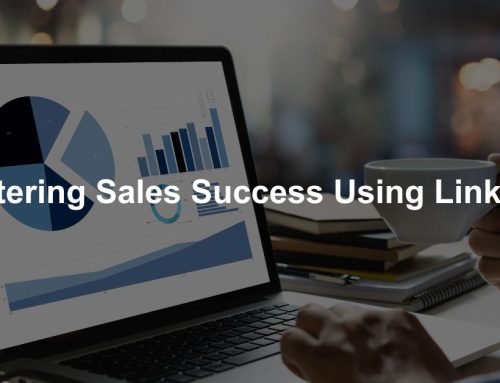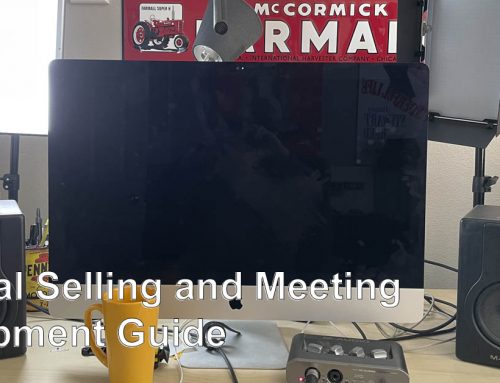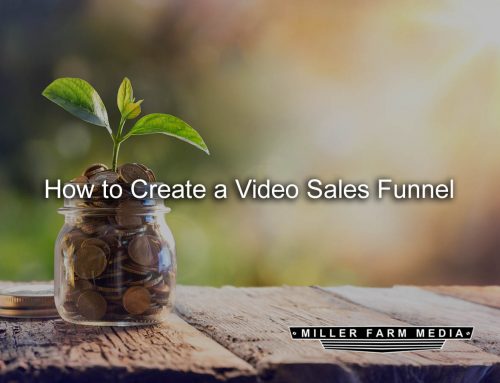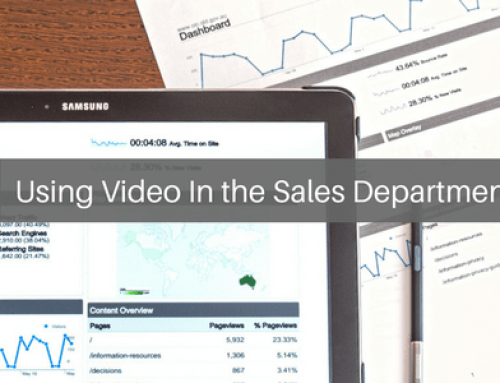How to Sell to the Modern Buyer
The buying process has changed. Is your company ready? The internet and smartphones give buyers instant access to information. The lockdowns of 2020, work-from-anywhere offices, and a new generation of millennial buyers becoming decision-makers at companies worldwide have changed the way people buy from B2B companies. All of this provides an opportunity for those businesses that are willing to adjust their sales strategies and sellers that are willing to do what it takes to win the deal.
The buying process starts without your sales team.
Buyers interact with digital channels before a sales meeting. This means they are looking at your website, social media, online reviews, videos, and webinars. It doesn’t matter if you are a B2B or B2C brand. Both groups are doing research. People are looking for experts online. Is your company providing them with experts to guide them through the sales journey they go on before they contact a salesperson, or are you letting your competitors build sales relationships online?
Buyers want something different from sellers.
According to a report from Forester, buyers want a consultative, collaborative, and efficient sales process. Not only that, but the buying cycle has increased and includes more decision-makers than ever. I don’t have to tell you this isn’t good for sellers. The more decision-makers, the harder it is to sell. When asked, I recommend no more than 3 decision-makers, and they all need to go to every sales meeting with the prospective vendor. If you have more than 3 decision-makers, it goes back to that old saying about how too many cooks in the kitchen screw everything up royally and make bad decisions. Maybe I am paraphrasing.
Understand your buyer
Millennials are now the largest group of decision-makers. But Gen X has larger budgets. Millennials like tech-savvy, consultative experiences. Gen X likes to learn about products and services on their own. We are also seeing an increase in CFOs being brought into the decision-making process. This is a bad idea, but sellers need to roll with it and make sure they are talking about the benefits of your product and services, as well as talking about the economic benefits CFOs want to hear. Buyers also want to connect with your executive teams. This is another place video can help.
Understand how they buy
In order to understand how they buy, you need to know the buyer’s journey. The buyer’s journey has become chaotic, with so many messages and so many places to get lost along the way. You need to plan the journey they will go on to keep them engaged and provide enough flexibility for them to go through some or all of the journey on your terms. The buyer’s journey should have at least 5 steps. It can have more but no less. To leave out one step is a missed opportunity to connect with clients and prospects. The 5 steps are awareness, education, consideration, decision, and retention.
- Awareness – Usually, someone has a problem, and they go online to look for answers. They will also ask others or a current supplier. They are probably not fully aware of the real problem. At this stage, you need to be the expert where they are looking. If it is on Google, you need to rank high with answers to their questions on your website, social media, or YouTube. Think about what will lead them deeper into the funnel, which is the next step.
- Education – Once people are aware of their problem, they educate themselves on their options. How can they or someone else solve their problem? This is a separate stage from awareness because they have the world internet available for education, and you need to be the expert they find to help them solve their problem. Education is the stage that is most often forgotten, but it is one of the most important for the modern buyer because they want to go at their own pace and, in some cases, fear a pushy salesperson. As salespeople, we don’t want to be free consultants. However, online, we need to be as helpful as possible to lead the prospect into seeing us as the expert they are looking for. Be careful not to give them all the information. Give them a reason to talk to a salesperson.
- Consideration – In this stage, the buyer is starting to get clear of their problem and is now getting closer to solving it. However, there is a good chance that they still really don’t understand the real problem. They may have gotten some bad advice, or they might be holding on to assumptions. Regardless, they are looking at all their options. This is where they are most likely to reach out to a salesperson. This is where a salesperson can continue their journey by asking good questions. If your website is set up correctly, you will get a request for a quote from them.
- Decision – They become a customer in this stage. They are going to ask questions like, “What is this going to cost?” or “How long is it going to take?” This is where they figure out if they even want to solve the problem. Will they work with someone internally or externally? You need to learn who the decision-makers are and make sure you can talk with them all.
- Retention/ advocacy – Now, you want to keep them as satisfied customers and introduce them to your other solutions. We call this up-selling and cross-selling. You also want them to refer you to others who could use your services.
Align sales and marketing.
There was a time when marketing was responsible for awareness, and sales did everything else.
This is no longer true. Thanks to the internet, marketers are now responsible for helping in every stage of the sales process. The process now looks like a basketball game passing the ball back and forth to get to the sale. The mistake I see, especially with B2B companies, is that there is a sales guy who is in charge of marketing. Sales guys know how to sell. They love people, but they ignore all the digital stuff because it gets in the way of what they love to do, which is sell. They are terrible marketers. Marketers are usually terrible sellers, so you need someone on your team that can speak both languages and bring the teams together. You also need sales and marketing people who are coachable.
Sales Enablement Strategy
Create a sales enablement strategy to supercharge your sales process. This is the process of providing your sales team with the resources they need to sell more. This might include content, tools, knowledge, and information to help sell your product or service. This is an excellent opportunity for you because most businesses fail to provide their sales team with the right things. The businesses that fail to provide these things also overlook online tools because they don’t want to make the investment. Sales enablement is a collaboration between sales and marketing, and it is why we created the Sales Alignment Method to fix the problem we have found between sales and marketing in many different companies. The sales process has changed, and this change requires marketing to think more like a salesperson.
Your website is at the center.
Most companies fail to leverage their website as a sales tool. When selling to a modern buyer, one of the first things you need to fix is your website. Your website is a sales tool. It should have the message of your best salesperson. It should be thought of as your first-line sales team. If your sales process is a wheel, your website is at the center because everything you do online and offline can use your website as a tool for engaging and tracking prospects through the sale. This is why you need sales-focused website design services.
Because marketing and sales must work together for sales and marketing to align, you must realize a few things about the modern buyer:
- They want to hear from your customers. Written and video testimonials are essential in this phase. This should be the second place you spend your money. Make sure to tell your customer’s story. Tell the problem they had and the solution you provided, and how life is better now that you have helped them.
- Remote sales meeting – The next generation of buyers prefers to meet online. So, if you can’t meet with them face to face, have a plan for how you are going to engage and build trust. This means your online sales meetings need to have a little more production value and need to be very concise because it will be easy for them to get lost on another screen while you are talking.
- Want answers now. With every answer just a quick internet search away, they want this convenience with your product or service. If you don’t do it, your competitors will. The mistake that I have seen many companies make is that they try to do this but never ask for the sale.
Build relationships with video.
People want to do business with those they trust. They don’t need to like you, but they need to trust you. Creating videos is a great way to build relationships faster with the modern buyer. Putting real people in those videos is even better. Create videos for each stage of the buyer’s journey. We have a system for video production services called the Magnificent 7.
Collect Data
Another reason your website is at the center is that it allows you to collect data on what prospects’ needs and interests are as it relates to your products and services. If set up correctly, it can also signal your sales team to let them know when to follow up.
Do you need help connecting with the modern buyer? Learn more about the Sales Alignment Method






Leave A Comment